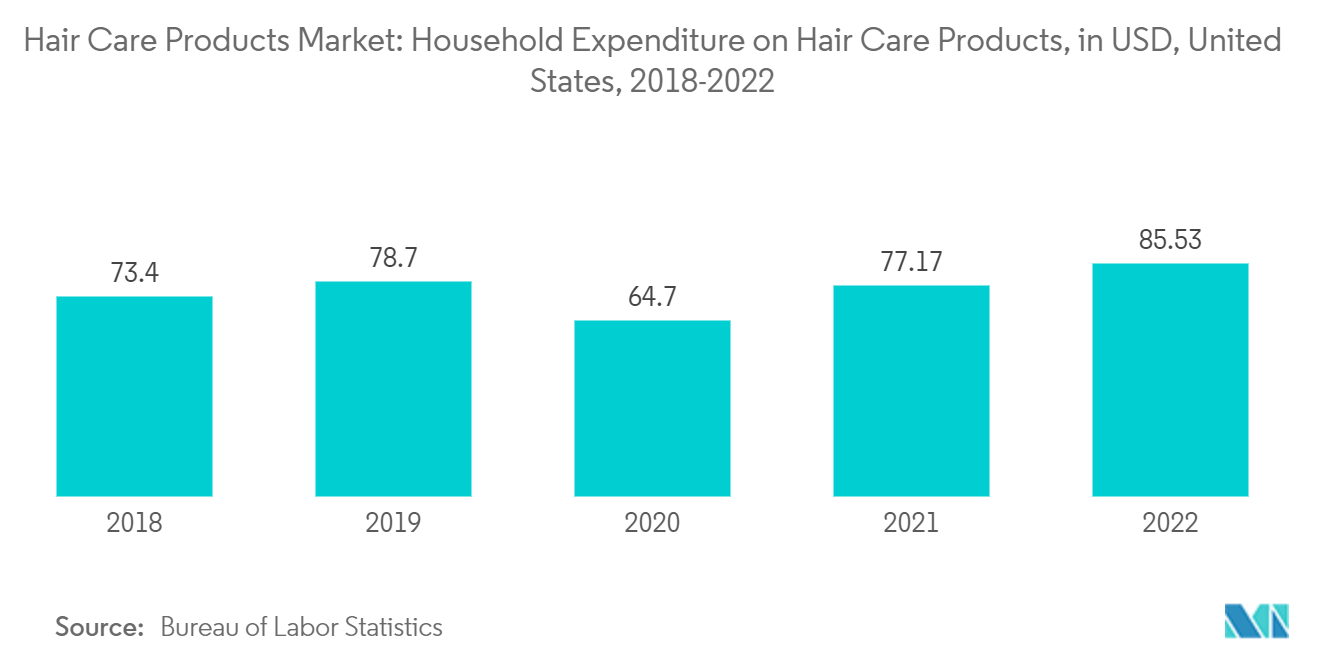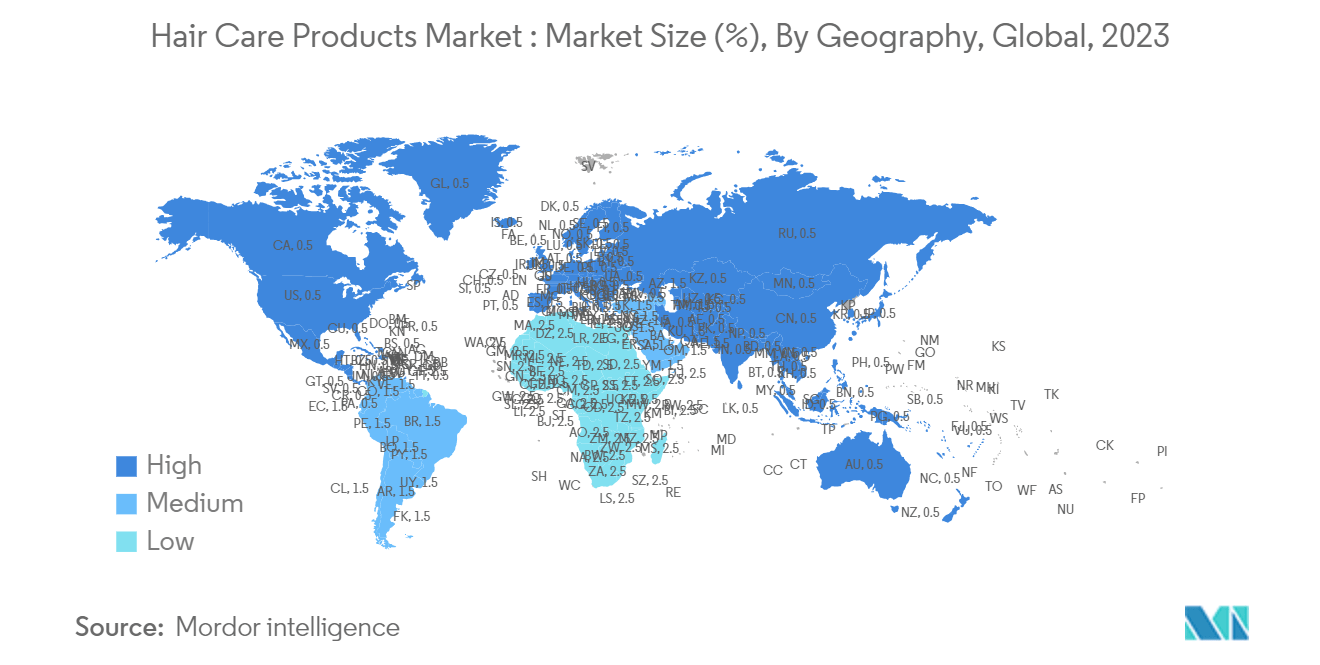Market Trends of Hair Care Products Industry
Increased Consumer Spending on Hair Care Products
- Consumers purchase hair care products from retail outlets for easy access while addressing their hair problems. For the past few years, the market has been primarily driven by the sales of hair oils, especially Moroccan oil, which is witnessing significant global demand. More women consumers are inclined toward hair care products due to the increased usage of heat styling tools that damage the hair. Thus, consumers are using hair care products targeted to prevent further damage to hair and reverse hair fall caused due to heat from styling tools.
- The amount spent on hair care products annually varies in the United States. According to the Bureau of Labor Statistics, American consumers spent around USD 85.53 on hair care products in 2022, an increase from USD 77.17 in 2021.
- Furthermore, there is a high demand for natural ingredients in the market, leading to most companies launching products with natural ingredients, such as plant-inspired and premium botanical ingredients. Among the organic hair care product types, such as conditioners and shampoos, serums and oils, and styling products, the former holds most of the share in the organic hair care market due to its wide usage. Owing to the demand, manufacturers are introducing natural and organic-based hair care products. Development For instance, in September 2022, Dabur India launched its new hair oil product, Vatika Neelibhringa21. It follows the ancient Ayurvedic method of Tali Pak Vidhi. Anti-dandruff organic hair oils are also expected to register robust growth over the forecast period.

Asia-Pacific is the Fastest-growing Region
- The hair care market is projected to record the fastest growth rates in the Asia-Pacific region. Changing consumer dynamics, coupled with increasing product awareness, has been identified as the major driver of the market. Increasing millennial consumers, migration toward cities, and rising women's employment are further augmenting the market demand.
- For instance, according to the World Bank, the female labor force participation rate in China was approximately 61.07% in 2022. Additionally, migration to cities has directly impacted the market of traditional hair care products. Meanwhile, the existing population of the cities is further driving sales from specialty stores, e-commerce websites, and salons particularly.
- Moreover, consumers increasingly prefer items made with natural components. As a result of research reports linking synthetic compounds such as sulfates and parabens to curly hair, flaky scalps, and split ends, customers are avoiding products with these chemicals. Countries with zestful consumer cultures, such as India, China, and Japan, have opened the way for the organic/herbal hair care business to thrive. Over the last half-decade, these countries' large populations and favorable network externalities have helped them achieve tremendous development in the organic hair care industry.
- The key players across the region are mainly focusing on innovative product launches and expansion. For instance, in February 2022, Arata introduced its most innovative hair care range – The Advanced Curl Care range. Featuring eight innovative and aspirational products including hair gel exclusively created for the curly-haired community. This hair care range was launched by the Indian actress Taapsee Pannu.


